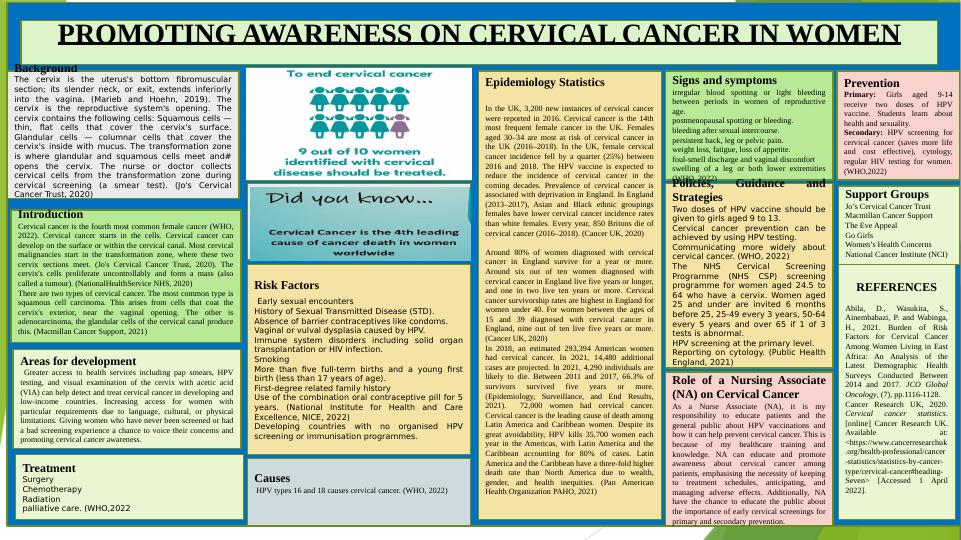Promoting Awareness on Cervical Cancer in Women
Develop a poster promoting awareness on cervical cancer in women, including information on the cervix, cervical cancer types, and guidelines for creating the poster.
1 Pages1289 Words97 Views
Added on 2023-06-11
About This Document
This presentation provides an overview of cervical cancer, including its risk factors, causes, signs and symptoms, and prevention strategies. It also highlights the role of nursing associates in promoting awareness and educating patients and the public. The presentation includes statistics on cervical cancer incidence and survival rates in different countries, as well as information on support groups and resources available for those affected by cervical cancer.
Promoting Awareness on Cervical Cancer in Women
Develop a poster promoting awareness on cervical cancer in women, including information on the cervix, cervical cancer types, and guidelines for creating the poster.
Added on 2023-06-11
ShareRelated Documents
End of preview
Want to access all the pages? Upload your documents or become a member.
Pathophysiology of cervical cancer
|3
|686
|31
Assignment | Nursing Cervical Cancer
|4
|1005
|19
Treatment and Management of Cervical Cancer
|13
|2481
|291
Description of pathophysiology
|5
|858
|43
Cervical Cancer: Definition, Historical Perspective, Pathophysiology, Prognosis, Follow-up, Future Treatment
|2
|829
|383

